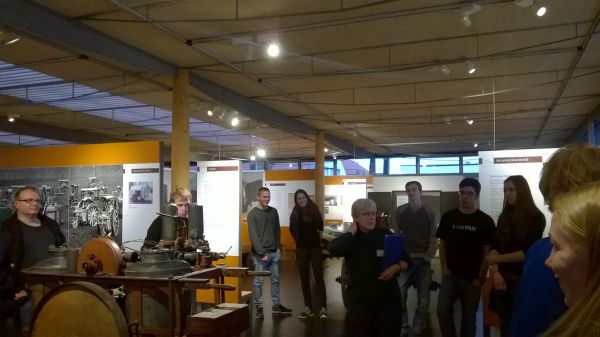The Hopmuseum

Hopmuseum
The German Hop Museum is located in Wolnzach, Bavaria. The museum shows the history of the hop plant, and what the hop plant is.
We went to the Hop Museum thursday the 24th February. We got a guided tour of the whole museum, where we learned almost everything there is to know about hops. The museum has a large installation on the history of hops, including a variety of old tools, machines and photographs of the past.
The museum has a large hop cone that shows you what the plant looks like on the inside. The part of the hop (humulus lupulus) that the brewers are interested in is the inner part of the hop cone that contains the lupulin gland which consists of alpha acids that are essential for the beer flavors, creating the bitter taste that you often get in beer.
The male hop
It is rather rare for male hops to occur in the nature, but when it happens the hop producers would want to remove them right away. This is due to the pollination the male hop perform on the female hop. The pollination increases the size of the hop cones, but it also increases the amount of hop seeds. Those seeds are the ones that turn into hop plants, and therefore they are ideal for obtaining a new variety of hop. But they are not prefered in the beer production, as it makes beer that doesn’t taste well.
The picking machine
The machine took over the humans’ job, because this was way more effective. Later the tractor made the production of hops more efficient, since it became possible to put up the wire, that the plant needs to grow, more easily. Previously they had used seven meter high poles that had to be taken out of the ground when the plant was harvested.
During the industrial revolution hop production had its “golden age”. That was because so many new tools were invented which made harvesting the hops a lot easier.
In 23 April in the year 1516, Duke Wilhelm the 4th and Ludwig the 10th established the so called Reinheitsgebot (the purity law) that says that you ought not to add anything to the beer recipe but water, barley and, of course, hop.
After we learned a lot about the history, cultivation and processing of hop in the Hallertau everybody looked forward to an extraordinary beer indulgence seminar.
In this beer seminar we had the opportunity to taste four high-quality types of beer.
We also learned in an entertaining way some interesting facts about the different kinds of beer brewing.
Dr. Pitzl, the leader of the hop museum, gave us a lot of information about the various kinds of beer and their different quality. Before tasting the beers he explained which kind of beer we were tasting and told us something about where the breweries were situated.
Afterwards we had the opportunity to sample four different kinds of beer. We also got four types of cheese that went with each type of beer. One of each extraordinary kind.
Article by
Kirsten Virkelund, Asta Ivarsdottir, Mathias Nielsen (H.C. Örstedt-gymnasiet, Kopenhagen-Ballerup), Anne Böhm, Stefan Reith

